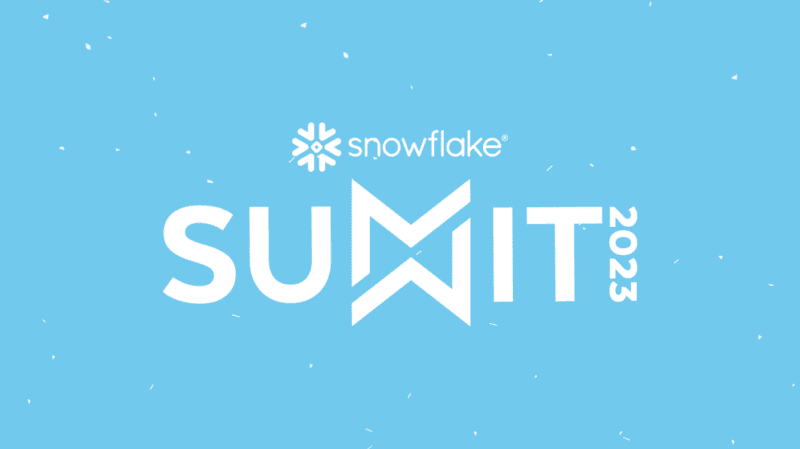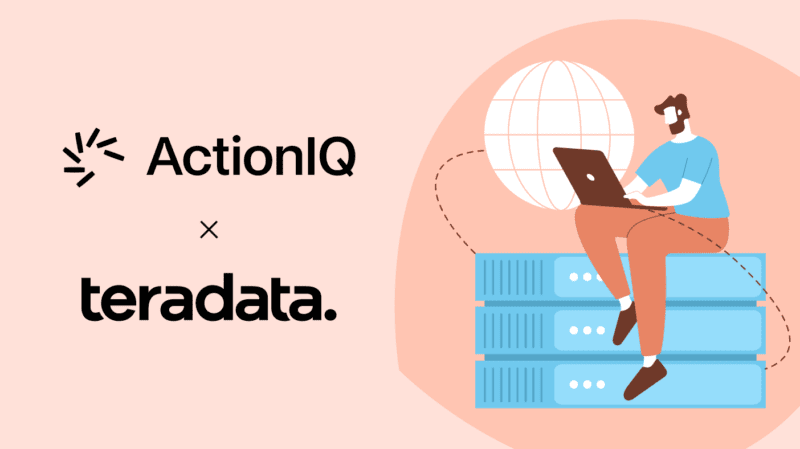Snowflake Summit 2023: 3 Key Takeaways

Most of the conversation generated at Snowflake Summit 2023 was about AI… That’s because announcements about Snowflake’s expanding partnership with NVIDIA to bring generative AI and LLMs to the data cloud, expanding programmability for AI/ML and more took center stage this year at the conference.
The team at ActionIQ loved learning all about what’s next for Snowflake, as well as meeting folks at our booth to talk about shared principles we have with Snowflake around data infrastructure — stop pulling the data out, start bringing the applications in (à la composable infrastructure) — but I digress.
To wrap up our time at Snowflake Summit, we wanted to share 3 key takeaways from the conference that we expect to define the landscape in the coming year.
3 Key Takeaways from Snowflake Summit 2023
1) Businesses Will Need To Face the Practical Realities of Enterprise Data
Marketers are the #1 beneficiaries of the modern data stack — most marketers are still in SaaS land and don’t even realize the pivot that huge ecosystems like the Snowflake partner community are making towards line of business, with new applications for teams that are closer to revenue. This means new tools, better access to data, fresh perspectives getting injected into MarTech.
Still lots of learning to do: while it’s great to see new energy pointed towards marketing teams, there’s still a lot of naïveté from some data startups on the practical realities of the enterprise (e.g., “Since all of your enterprise data is already clean, flawless, and completely centralized in Snowflake…”).
It’s not surprising. Many of these companies build their entire business around these data warehouse vendors, but data startups would benefit from speaking to more enterprise CMOs to understand that the actual state of enterprise data is messier and what they want is more control, better visibility, and real evidence that you provide easy ways for marketers to use data to drive the business.
2) Brands Need to Bring Their Compute Engines to the Data
One big (hopefully) obvious note here brings us to our second key takeaway from Snowflake Summit 2023 — your LLMs are only as good as their data.
When organizations are building those custom models, they need to act on the freshest, most comprehensive data set in order to get the best insights for use case application. The Snowflake data cloud is the single source of data truth for enterprise organizations — so why pull data out and spin off copies when you should simply go to the source?
One major theme of the conversation keynote with Frank Slootman, Chairman and CEO of Snowflake and Jensen Huang, CEO at NVIDIA with Sarah Guo, CEO of Conviction, was how data gravity and its implications are real. Brands used to bring their data to their computers, but in order to maintain privacy, security, governance, accuracy and breadth, the new paradigm will entail the application going to the data.
We’re big believers in the composable approach (it’s why we partner with Snowflake to compute directly in the data cloud — zero-copy, no-code) so we’re excited to see how composability continues to define the landscape.
3) Generative AI Will Redefine the Economics of Business
Not only is generative AI changing workloads, but it’s redefining the economics of business and cost structures. In the keynote, Slootman and Huang discussed how through use case application, generative AI is unlocking insights like churn prediction for brands like Instacart in a way that’s never been done before — in Snowflake’s example, they discussed how churn is a notoriously difficult-to-predict use-case — but it’s in the data.
Now, generative AI will help brands maintain growth at scale. Beyond the revenue opportunity, new partnerships like the one between NVIDIA and Snowflake will enable more enterprise businesses to create their own models at a lower cost than ever before, with faster workloads that offer unprecedented return. This leveling of the playing field will help businesses accelerate innovation and activate insights to supercharge their growth.
The Future of Snowflake’s “Software 3.0”
But is it all just hype? If so, it’s a hype that’s been in the works for a decade.
The growth and explosion of generative AI both lately and at Snowflake Summit 2023 is made possible by partnerships like Snowflake’s with NVIDIA — lowering the barrier for entry and making cost-effective modeling available for enterprise organizations to design those custom LLMs with their data. But businesses will need to be realistic about the actual state of enterprise data. Our interactions with technology as humans and as businesses have been slowly evolving — and with partnerships like these, we’re just getting started exploring those changing dynamics.
See how Snowflake and ActionIQ partner when you download out our Snowflake Solution Sheet.





